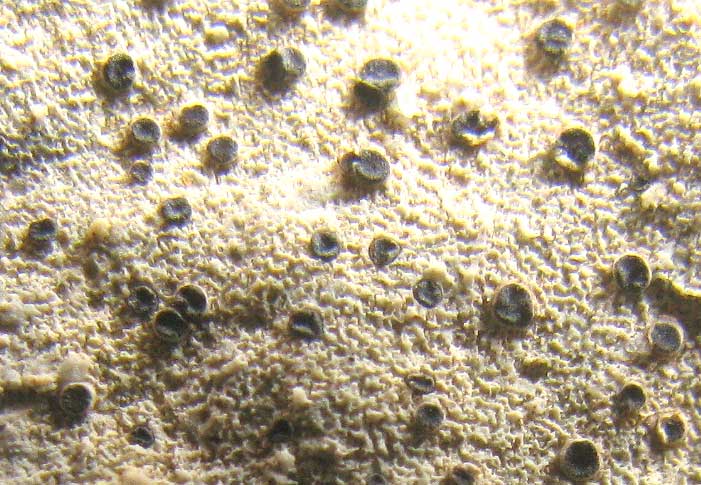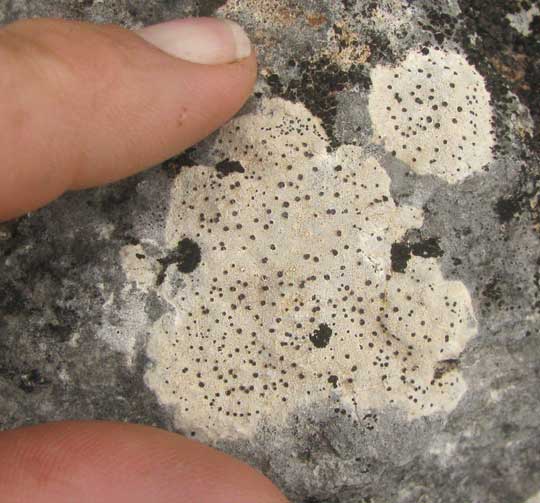Excerpts from Jim Conrad's
Naturalist Newsletter

from the March 2, 2014 Newsletter issued from the Frio Canyon Nature Education Center in the valley of the Dry Frio River in northern Uvalde County, southwestern Texas, on the southern border of the Edwards Plateau; elevation ~1750m (~5750 ft); N29.62°, W99.86°; USA
BAGLIETTOA LICHEN
On an outcrop along an arroyo on hard limestone, a white, black-speckled, crustose lichen appeared, as if to emphasize how sharply one has to focus on subtle details when identifying certain species. This one is shown below:

Its spore-producing apothecia are shown atop this page, where sunlight slants in from the side emphasizing the graininess of the thallus' surface. This lichen wasn't far from a Clauzadea lichen whose thallus was smooth and pitted with tiny black dots between the larger ascoma pits. Also, the Clauzadea's apothecia either were very deep in the pits or had matured and dropped out, while on this lichen the black apothecial surface is clearly visible and is concave.
But, couldn't this just be a younger phase of the Clauzadea? Maybe its fresher thallus is not yet pitted with tiny dots, and not yet weathered to smoothness. And maybe later these apothecia will drop out just like the previous species' appear to have done.
One reason I separate these two lichens is that the latter species' apothecia are larger than those of the Clauzadea. Also, on the Internet I find pictures at reputable websites whose Clauzadea metzleri pictures match the lichens above identified as Clauzadea metzleri, while other pictures match our current lichen. They are identified as BAGLIETTOA BALDENSIS*, sometimes known as Verrucaria baldensis, and without a common name. Bagliettoa baldensis is common on limestone in Europe, especially the southern part, and appears here and there in the US, especially in the southern states.
It's awkward to assign names on the basis of such flimsy evidence, yet it's important to place our observations and pictures where experts can find them and use what they want. And they'll find this page just seconds after searching on the keywords "Bagliettoa baldensis."